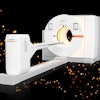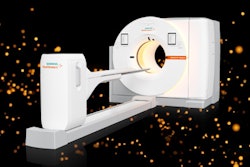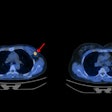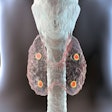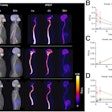Cells normally involved in repairing wounds in our bodies have become an intense focus in cancer research, with hopes for new treatments pinned on nuclear medicine.
Fibroblast activation protein (FAP) is found in fibroblasts during tissue remodeling processes like wound healing, yet research has shown that cancer cells also express the protein to create supporting tissue around tumors.
In 2019, nuclear medicine took notice when German researchers developed a FAP radiotracer for PET imaging that detected 28 different types of cancer. Paired with radiopharmaceuticals that release radiation to kill cancer cells, FAP-targeted theranostics appeared to promise new hope in fighting the disease.
“There was obviously and there still is a huge amount of excitement surrounding FAP-targeted radiopharmaceuticals and the excitement comes from the idea that it can be expressed in any tumor type,” expert Thomas Hope, MD, of the University of California, San Francisco (UCSF), recently told AuntMinnie.
Still, there are hurdles to overcome, with U.S. approval of any FAP-targeting radiotracers for clinical use at least three to five years away, he added.
Hope was the lead author of recently published guidelines on FAP-PET imaging, with the goal of helping pave the way for approvals of new theranostic pairs.
Currently, among the more promising clinical trials in the U.S. evaluating FAP-targeting radiopharmaceuticals is the LuMIERE trial, in which patients are being selected for treatment with lutetium-177 FAP-2286 based on gallium-68 FAP-2286 PET/CT imaging.
The FAP-2286 ligand is the first of a “second generation” of FAP ligands that have been designed to bind to cancer cells for longer than previous ligands such as FAPI-46 and thus, may be more effective, explained expert Jeremie Calais, MD, of the University of California, Los Angeles.
Ultimately, hopes for FAPI-targeted theranostics rest on finding the right “indication,” Calais said, meaning that while FAP-PET imaging can visualize a variety of cancer types, the key will be to narrow the field to cancer types where the technique appears most effective.
“It’s coming little by little,” he said.



